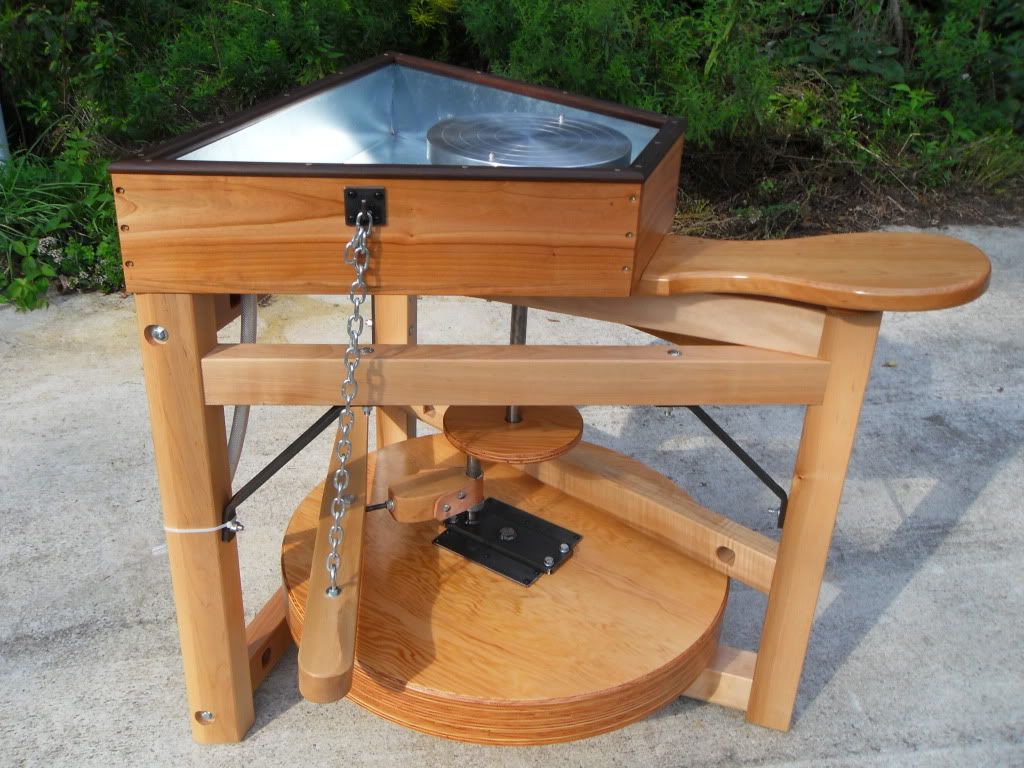The Leach Treadle Wheel
 Though electrically-powered wheels are of course common, today, many potters still prefer to throw on a human-powered wheel. Whether chosen for aesthetic purposes, out of a sense of traditionalism, or simply for exercise, these human-powered designs usually incorporate a heavy flywheel which is brought up to speed, and kept there, by the operator’s leg muscles. The simplest “kickwheel” is exactly that: the flywheel turns below the seated potter’s feet and is kept in motion by repeatedly kicking its surface.
Though electrically-powered wheels are of course common, today, many potters still prefer to throw on a human-powered wheel. Whether chosen for aesthetic purposes, out of a sense of traditionalism, or simply for exercise, these human-powered designs usually incorporate a heavy flywheel which is brought up to speed, and kept there, by the operator’s leg muscles. The simplest “kickwheel” is exactly that: the flywheel turns below the seated potter’s feet and is kept in motion by repeatedly kicking its surface.A step up from that design is the “treadle” wheel, which adds a crank and reciprocating pedal for greater mechanical advantage and smoother operation. And among designs for treadle wheels, the “Leach” type stands out as a popular favorite. In the embedded video, potter David Berg demonstrates the action of a Leach-type treadle wheel and gives a bit of background on its history.

Named for famed English studio potter Bernard Leach (Wikipedia ), the Leach treadle wheel was in fact designed by his sons. Bernard’s grandson Simon Leach is a renowned studio potter and teacher of pottery, and still uses and actively promotes the Leach treadle wheel design in his work. They are expensive to buy, but the plans and design details are widely known and shared:
- This set of scanned, hand-drawn plans hosted on a Duke University server are of unknown provenance, as far as I can tell, but are mentioned favorably in DIY wheel threads on several online pottery forums.
- Potter Lloyd Cledwyn hosts a site dedicated to the Leach treadle wheel , including photos of an original wheel, a high resolution scan of some early blueprints, and some nice original assembly illustrations.
- Simon Leach himself has published a large photo gallery meticulously documenting the construction of his newly-commissioned treadle wheels.Simon’s YouTube channel is also a great source of information, and features several clips detailing the assembly, history, and operation of the Leach wheel.
Though I haven’t seen any detailed step-by-step tutorials, plenty of information is available, between and among the various other online resources, for potters who want to build a Leach wheel for themselves. This one, from Pittsburgh artist Dan Matuschek, is a nice example. [Thanks, Barry!]

